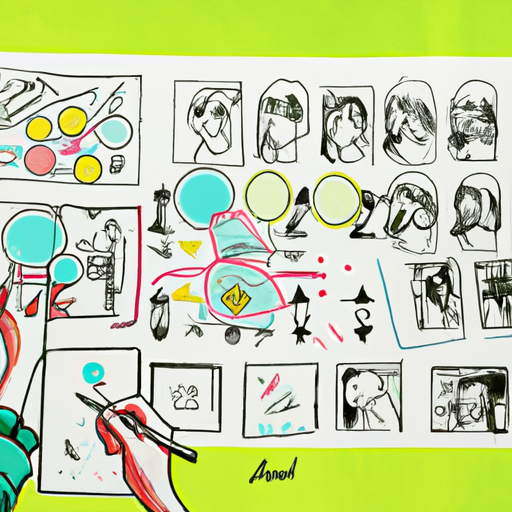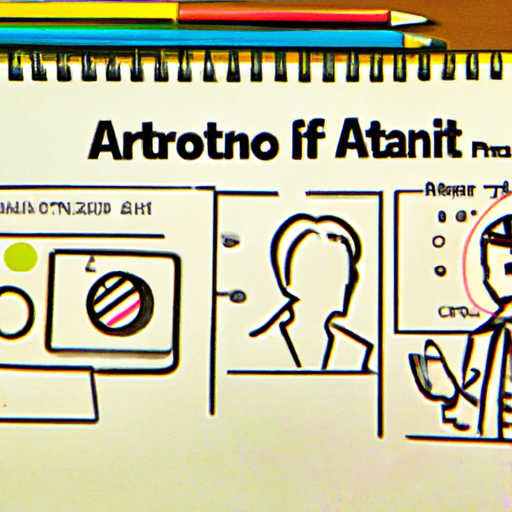
-
Table of Contents
- The Art of Sketchnoting: Visual Note-Taking
- What is Sketchnoting?
- The Benefits of Sketchnoting
- Techniques for Sketchnoting
- 1. Typography
- 2. Icons and Symbols
- 3. Borders and Frames
- 4. Containers and Connectors
- 5. Visual Metaphors
- Applications of Sketchnoting
- 1. Education
- 2. Business and Meetings
- 3. Presentations and Public Speaking
- 4. Personal Development and Reflection
- Conclusion
The Art of Sketchnoting: Visual Note-Taking

Visual note-taking, also known as sketchnoting, is a creative and effective way to capture and organize information. It combines words, images, and symbols to create visually engaging notes that enhance understanding and retention. Sketchnoting has gained popularity in recent years as a powerful tool for learning, brainstorming, and communication. In this article, we will explore the art of sketchnoting, its benefits, techniques, and how it can be applied in various contexts.
What is Sketchnoting?
Sketchnoting is a form of note-taking that involves using a combination of text and visuals to capture and represent information. Instead of relying solely on written words, sketchnoters use drawings, icons, and diagrams to convey ideas and concepts. The goal is to create a visual representation that is both informative and visually appealing.
Sketchnotes are not just doodles or random drawings. They are carefully crafted visual summaries that capture the essence of a presentation, lecture, or conversation. Sketchnoters listen actively, distill key points, and translate them into visual elements that help them remember and understand the information better.
The Benefits of Sketchnoting
Sketchnoting offers numerous benefits that make it a valuable tool for both personal and professional use:
- Improved comprehension: By combining words and visuals, sketchnotes engage both the verbal and visual parts of the brain, leading to better understanding and retention of information.
- Enhanced memory: The act of sketching and creating visual associations helps reinforce memory and recall. Sketchnotes serve as visual cues that trigger the recollection of the associated information.
- Increased creativity: Sketchnoting encourages creative thinking and problem-solving. It allows for the exploration of ideas through visual metaphors and connections.
- Effective communication: Sketchnotes can be shared with others to convey complex ideas in a concise and engaging manner. They are a powerful tool for presentations, reports, and storytelling.
- Engaging and fun: Sketchnoting adds an element of playfulness and enjoyment to the note-taking process. It can make learning and information processing more enjoyable and less tedious.
Techniques for Sketchnoting
While sketchnoting is a highly personal and flexible practice, there are some common techniques and elements that can help beginners get started:
1. Typography
Typography plays a crucial role in sketchnoting. Experiment with different fonts, sizes, and styles to emphasize key points and create visual hierarchy. Use bold and large lettering for headings and important concepts, and smaller text for supporting details.
2. Icons and Symbols
Icons and symbols are powerful visual tools that can represent ideas, objects, or actions in a concise and universally understandable way. Develop a set of simple icons that you can use consistently throughout your sketchnotes. For example, a lightbulb can represent an idea, a speech bubble can represent a conversation, and a gear can represent a process.
3. Borders and Frames
Using borders and frames can help organize your sketchnotes and create visual separation between different sections or ideas. Experiment with different shapes and styles to add visual interest and structure to your notes.
4. Containers and Connectors
Containers are shapes that enclose related information, such as a circle around a key concept or a rectangle around a list. Connectors, on the other hand, are lines or arrows that visually link different elements or show relationships between ideas. Containers and connectors help create a visual flow and hierarchy in your sketchnotes.
5. Visual Metaphors
Visual metaphors are powerful tools for representing abstract concepts or complex ideas. They involve using images or symbols that have a metaphorical connection to the concept you want to convey. For example, a lightbulb can represent an idea, a puzzle piece can represent problem-solving, and a tree can represent growth.
Applications of Sketchnoting
Sketchnoting can be applied in various contexts and has proven to be beneficial in different fields:
1. Education
Sketchnoting is a valuable tool for students of all ages. It helps them actively engage with the material, improve comprehension, and retain information. By creating visual summaries of lectures or textbooks, students can review and study more effectively. Sketchnoting can also be used as a form of assessment, allowing students to demonstrate their understanding in a creative and visual way.
2. Business and Meetings
In the business world, sketchnoting can be used to capture and communicate ideas during meetings, brainstorming sessions, and conferences. Sketchnotes can serve as visual minutes that capture the key points, decisions, and action items. They can be shared with colleagues to ensure everyone is on the same page and provide a visual reference for future discussions.
3. Presentations and Public Speaking
Sketchnoting can greatly enhance presentations and public speaking engagements. Instead of relying solely on slides or written notes, speakers can create sketchnotes that summarize their main points and visually engage the audience. Sketchnotes can also be used as handouts or shared online to reinforce the message and provide a memorable takeaway for the audience.
4. Personal Development and Reflection
Sketchnoting can be a powerful tool for personal development and reflection. By sketchnoting books, articles, or podcasts, individuals can actively engage with the material and gain a deeper understanding. Sketchnotes can also serve as a visual journal, allowing individuals to reflect on their thoughts, ideas, and experiences in a creative and visual way.
Conclusion
Sketchnoting is a versatile and effective technique for capturing and organizing information. By combining words and visuals, sketchnotes engage the brain in a unique way, leading to improved comprehension, memory, and creativity. Whether used in education, business, or personal development, sketchnoting offers a powerful tool for learning, communication, and reflection. So grab a pen and paper, and start exploring the art of sketchnoting!
